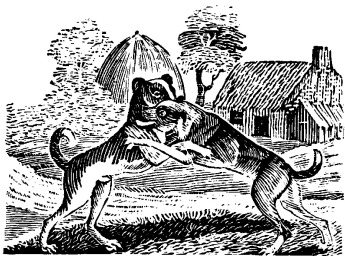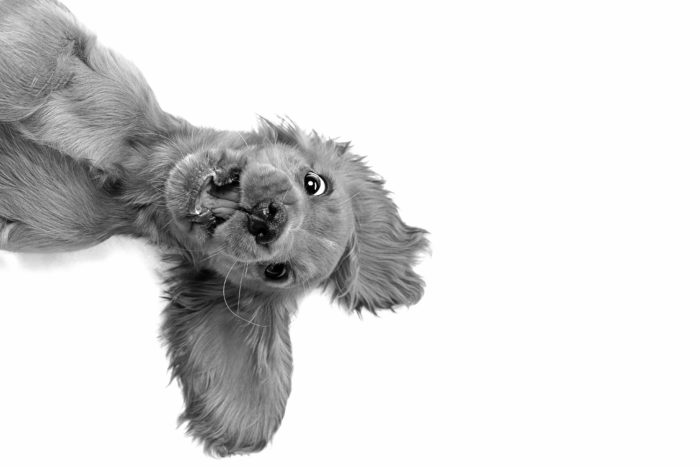Soft Mouth (Bite Inhibition)
All Dogs Bite
An important lesson for any puppy is to learn to inhibit the force of their bite. Puppies learn this skill while interacting with their littermates, playing with other puppies, and interacting with us. By allowing our pups to ‘mouth’ us, we get a sense of how much pressure they are using.
When puppies are playing and one bites down too hard, the other will yip providing the information, “ouch, that is too hard!” This is important feedback. Dogs have strong jaws and without knowing or meaning to, they can inflict a lot of damage. Puppies learn to have a softer bite as they play fight with their littermates.
Dealing With A Puppy Biting
If your puppy is biting too hard you can trying saying ‘ouch!’ in a sincere, hurt tone. This may or may not work. Often it is counter productive and ends up exciting a puppy even more. If you do try this be sure to keep your voice low since a high squeaky yip will most likely not work in your favour.
Redirect
A better bet is to try redirecting your puppy to an appropriate chew or long tug toy. The key here is the item you redirect to must be interesting to them in order for them to chew on it instead of you.
Disengaging From Interaction
Another tip to try is if your puppy is biting too hard is to remove yourself from close proximity. Stop the game. Fold your arms, stand up, or walk away. (Check Time Outs).
Nap Time
If nothing you do seems to help, it may be time for a nap. Over tired pups may bite harder and more frequently.
Breeder Responsibility
A responsible breeder will keep the litter together until they are at least 8 weeks. Puppies will hone their play and dog to dog interaction skills with their litter mates. A fun thing to notice is how dog play simulates the wild predator’s hunting style. Watch the predators on a nature show. How they stalk, chase, and tear apart their prey. Then watch your puppy play with his toys and other puppies.
Although your puppy will be separated from his litter and becomes part of your family, he needs to be able to continue to interact with his own kind.
Although your puppy will be separated from his litter and become part of your family, he needs to be able to continue to interact with his own kind.
Puppy Play
Puppy socialization classes are a good way to provide dog play opportunity. Find a well-run puppy socialization class. Your vet clinic may run their own sessions or can recommend a place you can take your pup. (Please check the Resources section for more information on recognizing a good puppy socialization class.) In addition to socialization classes, another good choice is allowing your puppy to spend time with a well-socialized, healthy adult dog that is friendly and patient with puppies.

Dog Body Language
To many people healthy dog play can look rough or aggressive. It is a good idea to learn about dog body language. This is how dogs communicate with one another. While watching dog play you may observe; dogs take turns being on top and on the bottom, dogs take turns chasing and being chased, dogs biting and chewing on each other. If you wish to learn more on this topic, a great book to get is The Other End of the Leash by Patricia McConnell. This video illustrates dog play gestures.
Play Safe
There are some signs that suggest that a dog may not be interacting in a safe manner for your puppy to be around. A dog who pounces on other dogs and continues to try and solicit play from a dog that is not interested in playing. Excessive body slamming or postures such as standing on the back of the other dog with two front paws or stiffly standing over another dog’s withers (the back of the neck area). This video illustrates many different dog interaction scenarios.

